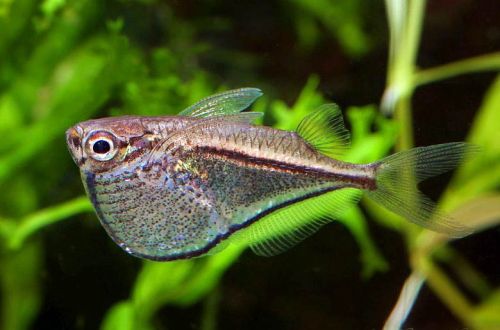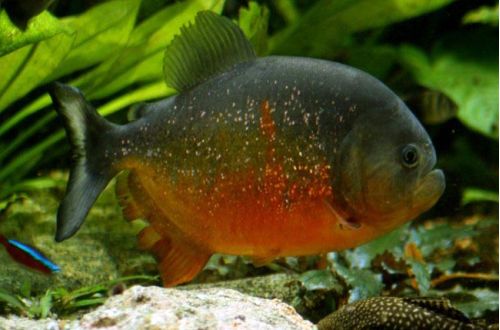
Pimelodus painted
Pimelodus painted, Pimelodus-angel or Catfish-pictus, scientific name Pimelodus pictus, belongs to the Pimelodidae family. Beautiful catfish with original coloring. It is marketed as a very peaceful and calm species, but one important aspect of its behavior is often overlooked – it is a carnivorous species that will inapplicably eat fish that can fit in its mouth.

Contents
Habitat
It comes from the equatorial part of South America, it is found mainly in the territory of modern Colombia. It lives in numerous small rivers with sandy or silty soil, as well as in the main channels of large rivers, such as Vaupes, Kerari, Isana and others.
Brief information:
- The volume of the aquarium – from 240 liters.
- Temperature – 22-25°C
- Value pH — 5.8–6.8
- Water hardness – soft (1-15 dGH)
- Substrate type – sandy
- Lighting – subdued
- Brackish water – no
- Water movement – moderate
- The size of the fish is up to 12 cm.
- Nutrition – any sinking with meat additives
- Temperament – conditionally peaceful
- Content single or in a group
Description
Adults reach a length of about 12 cm. The color of the body is silvery with contrasting black dots that continue on the fins and tail. Very long antennae are located on the head, reaching ¾ of the length of the catfish itself. Sexual dimorphism is poorly expressed, outwardly it is problematic to distinguish a male from a female.
Food
In nature, it feeds on aquatic insects and their larvae, small worms, crustaceans, and small fish. Despite their carnivorous diet in the aquarium, they are completely unpretentious and will accept all types of dry, frozen and live food, as long as they are sinking.
Pimelodus painted refers to those types of fish that cannot control the degree of their saturation, that is, they will eat constantly. To avoid overeating and subsequent digestive problems, food should be fed no more than once a day in the amount eaten in 5 minutes.
Maintenance and care, arrangement of the aquarium
The optimal volume of the tank for one fish starts from 240 liters. The design uses a sandy substrate with a few smooth boulders and various snags as shelter for the catfish. The presence of plants is not required, but clusters of floating vegetation are welcome, they serve as an additional means of shading the aquarium. Pimelodus prefer subdued light and in bright light will spend more time in shelter.
To imitate the water conditions characteristic of the natural habitat, it is necessary not only to maintain the necessary hydrochemical composition of the water, but also to provide a moderate horizontal flow – an internal current. A filtration system does a good job of this, however, in a very large tank, an additional artificial flow system may be required.
Maintenance of the aquarium is standard and consists of regular cleaning of the soil from organic waste, as well as weekly replacement of part of the water (20–25% of the volume) with fresh water. It is worth remembering that dirty soil with stagnant water leads to problems with the antennae, increasing the risk of infection, infection.
Behavior and Compatibility
A fairly peaceful and calm species, but it is worth remembering that the Catfish Pictus is a predatory carnivorous species that will, on occasion, eat small fish such as neons, guppies and others, so joint keeping is possible only with species of a similar size. Pimelodus painted can live both singly and in a group; no intraspecific conflicts have been noted.
Breeding / breeding
Breeding this catfish at home is very difficult and almost unattainable in the artificial environment of the aquarium.
Fish diseases
The main cause of most diseases is unsuitable living conditions and poor-quality food. If the first symptoms are detected, you should check the water parameters and the presence of high concentrations of hazardous substances (ammonia, nitrites, nitrates, etc.), if necessary, bring the indicators back to normal and only then proceed with treatment. Read more about symptoms and treatments in the Aquarium Fish Diseases section.





